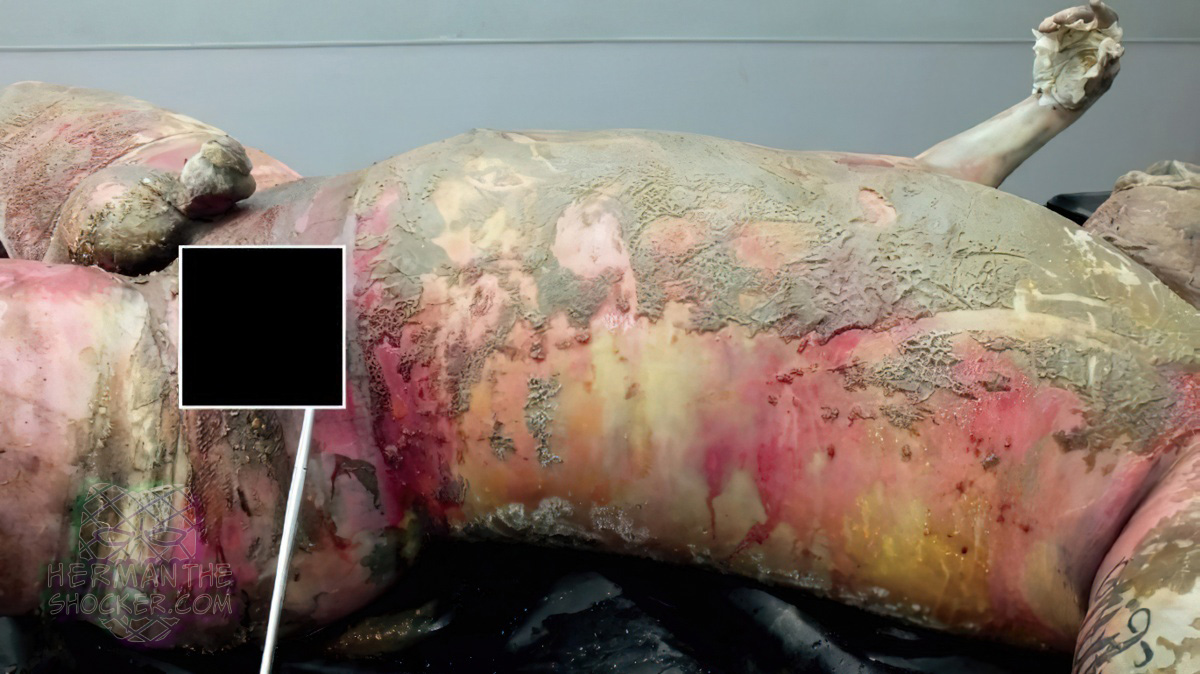Typical postmortem changes combined with mud and debris as well as sloughing of the skin of the hands and feet are typical for bodies recovered from the water. Perhaps the most well-known external change that immersion in liquid has on the body is wrinkling of the skin, particularly involving the hands and feet. Traditionally this has been called “washerwoman’s hands” or “washerwoman’s changes,” though a better designation on the autopsy report would be cutaneous changes of immersion. Cutis anserina or goose flesh is another cutaneous change of immersion and is caused by rigor of the erector pilli muscles within the skin. Both of these changes, wrinkling and cutis anserina, will occur as a postmortem change and do not require the individual to be alive upon entering the water. The usual postmortem changes of vascular marbling, dark discoloration of skin and soft tissue, bloating, and putrefaction occur in the water as they do on land though at a different rate, particularly in cold water. Sloughing of the skin, particularly involving the hands and feet, is common with prolonged immersion
Latest posts








